|
Each week smile in the sky will feature a different yoga pose and 5 physical health benefits and 5 mental health benefits related to it.
This week...bow pose [sanskrit translation: dhanur (bow) asana (pose)]. This is a strong back bend/front opener, eventually the hip bones are the only thing touching the mat. It requires a lot of back flexibility/mobility so please ensure you do child’s pose, a forward bend or other counter pose afterward. This is an intermediate pose so be gentle with your back: strengthen muscle and improve flexibility to build up to this…see this 25 min sequence to bow pose (don’t forget to add the most important pose – Savasana, the final resting pose, for at least 5 mins at the end). 1. Physical benefit: STRENGTH & FLEXIBILITY: BACK & NECK Performing this pose correctly involves activation of the muscles in the back – from the base of the spine to the tiny muscles in the neck. It releases the psoas and stimulates the vagus nerve, strengthening and activating the parasympathetic nervous system (PNS). See last week’s blog on lizard pose for more on this. Mental benefit: RESILIENCE Persisting, breathing and holding the pose just a little longer than you think is possible can have spin-off benefits for your trust and belief in yourself. Over time, practicing maintaining a pose beyond your perceived limits can transfer into improved courage, strength and resilience in other areas of life. 2. Physical benefit: STIMULATE DIGESTION The stretch and pressure on the belly can assist digestion - don’t have a big meal the night before practicing dhanurasana or it might be very uncomfortable! Mental benefit: REDUCE ANXIETY Stimulation of nerves in the spinal cord may allow for clearer, more effective communication between the brain and body, to allow the PNS to activate and to clear the mind. See here for some simple practices to reduce stress. 3. Physical benefit: IMPROVE POSTURE As the legs kick back, shoulders and chest open. Shoulder blades track together behind you, as if you are trying to clasp a $50 note between them. Pectorals receive a stretch. Mental benefit: RAISE MOOD Stimulation of digestion, removal of toxins and better absorption of nutrients strengthen the gut-brain connection. Research shows that neurons in the gut communicate with neurons in the brain and can have powerful effects on mood. Rolling around like a child in the pose: front- back, with the breath, or side to side, can often get you giggling: the ultimate panacea for feeling blue! 4. Physical benefit: IMPROVE BREATHING Long, deep breathing is crucial in this pose. Inhale - to lengthen through the back; exhale – to release tension and go a little deeper into the pose. Full awareness of the breath is made easier with placing your focus on the belly as it inflates and deflates on the mat. Mental benefit: MINDFULNESS The concentration required to maintain this pose allows for awareness of the present moment: mindfulness practice. Experiencing the belly inflating highlights the breathing process in the mind. A curious attitude and a commitment to non-judgment of the self as thoughts present themselves allows observation of the self. Over time this practice can help you develop a gap between action and reaction. 5. Physical benefit: STRENGTHEN QUADRICEPS This pose can help you create power in the quads, great for these large muscles and very energising. Ensure your knees are not splaying out, and flexed feet can increase energy through the legs. Mental benefit: IMPROVE CONCENTRATION Focusing internally on the space between the eyebrows: the third eye point, or on something in front of you, is an opportunity to practice meditation. Concentrating the attention on one point is an alternative to mindfulness meditation and may increase sustained attention and focus. To learn more about the mind-body connection and our services, including workshops for mental health and yoga, offered from March 2017 in Sydney’s Eastern Suburbs, and research consultancy, please see www.smileinthesky123.weebly.com Next week...one-legged king pigeon pose [eka pada rajakapotasana]
2 Comments
Those precious moments following my morning yoga self practice: what a spacious, peaceful, gracious, loving feeling. There was at least one moment during my practice today where I looked at the clock, checking I hadn't spent too long on my practice, aware that I have work to do.
Then - an awakening! My practice is essential to me fulfilling my work responsibilities. And not just because I'm a yoga teacher (though of course self-practice is irreplaceable when it comes to instructing others about alignment in poses). The practice is crucial for everyone. The gap between action and reaction that is created when I am fully aware and present within my body, breathing fully - this is mindfulness. This is being in tune with my authentic self. Being in flow, acting out of self-love, and compassion for others. Yoga practice allows me to clear away blockages so that I can listen to the messages my body sends - to ''be with'', and allow, sometimes uncomfortable or unpleasant experiences, until they pass, as everything does. It doesn't have to be yoga, it could be walking on the beach, going for a run, playing music - anything that allows us to come into a flow state: space and time to quiet the mind. And taking the time to care for your body, mind and soul may just make you more efficient and productive at work, and more patient and empathic in relationships too! In these moments, I remember I am worth that time and effort. We all are. Namaste. -the divine light within me bows to the divine light within you. Each week smile in the sky will feature a different yoga pose and 5 physical health benefits and 5 mental health benefits related to it.
This week...lizard pose [sanskrit translation: utthan pristhasana: utthan (stretch) pristhasana (the back body pose). This pose is wonderful for relieving stress: activating the parasympathetic nervous system (PNS), and releasing tight hips and back muscles, so essential in our increasingly sedentary jobs and lives. It’s also a wonderful opportunity to practice mindfulness. Read on for more.. 1. Physical benefit: LOWER BACK RELEASE The dual action of the front leg pushing into the mat and the back leg active in this pose allow for a juicy stretch into the back body, from the hips towards the mid-back. Crucial for so many of us who spend a large portion of the day sitting. Mental benefit: RELAXATION Stimulation of the vagus nerve, activating the parasympathetic nervous system (PNS), assists in allowing the body to begin its ‘rest and digest’ role. This is crucial for healing, absorbing nutrients and eliminating toxins, and contributes to a healthy body, healthy mind. See here for ways to stimulate your vagus nerve. 2. Mental benefit: FOCUS/CONCENTRATION Breathing with awareness in the pose allows the body to release tight areas but also allows the mind to quieten. This pose is a beautiful one to practice mindfulness: awareness of sensations in the present moment. See here for a short video explaining mindfulness by the creator of Mindfulness Based Stress Reduction (MBSR), Dr Jon Kabat-Zinn. Physical benefit: IMPROVED POSTURE Keeping the collarbones broad and opening the chest in this pose creates a more relaxed and open posture. 3. Mental benefit: EMOTIONAL RELEASE Surrendering the body into the pose can allow an emotional release. Many teachers emphasise the link of the hips to emotions like sadness and fear. The welcoming of vulnerability in the pose can be empowering and create a sense of relief. Physical benefit: FREE YOUR HIPS Walking the front foot to the outer edge of your mat allows for the outer hip to open. This area can be particularly tight in men and many women struggle with this too. 4. Physical benefit: BALANCE AND STABILITY The strong leg activation of this pose, keeping the body low to the mat, is a gentle way to improve balance with minimal face plant risk! Mental benefit: CALM The lizard pose, low to the ground while opening the groin, allows the body to cool. The lower body temperature assists PNS activation. 5. Physical benefit: QUADRICEP AND PSOAS STRETCH The release of the quads and psoas muscles can create more space in the lower back. Mental benefit: IMPROVED SLEEP Stretching and releasing the muscles of the back allow the body to come into a resting state, and may help to ease insomnia. See here for more calming pre-sleep yoga. To learn more about the mind-body connection and our services, including workshops for mental health, yoga, and research consultancy, please see www.smileinthesky123.weebly.com Next week...bow pose [dhanurasana] Each week smile in the sky will feature a different yoga pose and 5 physical health benefits and 5 mental health benefits related to it.
This week...crow pose [sanskrit translation: Bakasana: Bak (crow) asana (pose)] 1. Physical benefit: SHOULDER STRENGTH Strong shoulders are a must to support the weight of the lower body in the pose. Ensure shoulders are away from the ears. Plank is good core and shoulder strength preparation for bakasana. Mental benefit: SELF-CONFIDENCE (balance versus face plant!) First time attempting crow? Chances are you’ll be nervous about making face to floor contact! Trying new things that scare you a little is a wonderful way to build confidence in yourself. 2. Physical benefit: GROIN OPENING Flexibility in the inner groin area is essential to allow the knees to come high up on the upper arm or in the armpit for the pose. Mental benefit: SELF-TRUST Taking the (very slow and cautious), lean forward can challenge our trust in ourselves to stay safe and without injury. Exploring a new challenge can serve to increase trust in ourselves and our abilities. 3. Physical benefit: PELVIC FLOOR STRENGTHENING Engagement of the pelvic floor is central to lifting and flying your crow. Draw the area above the belly button in towards the spine and pull up on the anus and sexual organs. Please see here for 6 tips on getting into crow pose and more information about the bandhas. The two major bandhas most useful for this posture are mula bandha (the root lock) and uddiyana bandha (the upward flying lock). Mental benefit: IMPROVED CONCENTRATION Focusing your drishti (gaze), either on the breath (ideally), or on a point about 30 cm ahead of you on the ground, trains your brain in maintaining attention. This ‘transferable skill’ is highly useful in a multitude of situations including interactions with work colleagues, completing a major task or simply reading a book with conscious awareness. 4. Physical benefit: CHEST OPENING The collarbones are wide, shoulder blades tracking down the back behind you as you open the chest to hold the pose. This allows fuller breathing and more stable balance. Mental benefit: STABILITY Feeling and experiencing the solid earth or floor beneath our mats with our hands is an unusual experience. It may allow us to feel more connected and more stable when faced with life’s challenges. Keeping a steady mind while breathing through any balance pose can improve our sense of stability both physically and emotionally and allow us to be more mindful. 5. Physical benefit: Finger/hand/wrist strength The fingers are spread wide, pushing into the fingers and the inside of the thumb/first-finger area of the hands. This allows for an even distribution of weight as you balance and protects the wrists. Mental benefit: SELF-MASTERY Achieving and maintaining any arm balance requires awareness and the integration of body and mind. Measured breath and heightened awareness of the body limits the capacity of the mind to wander (which can result in sore noses in this pose!). Yoga and psychology are about helping us to realize our full potential. With increased body and mind strength and flexibility, we are able to become more still yet adaptable in our balances even when unforseen events challenge us, both on and off the mat. Stay tuned for next week - lizard pose [utthan pristhasana]. Each week smile in the sky will feature a different yoga pose and 5 physical health benefits and 5 mental health benefits related to it.
This week...camel pose [sanskrit translation: Ustrasana: Ustr (camel) asana (pose)] Known as one of the yogic ‘back bends’, this misnomer often has people crunching their back to force their body into the pose. Back bends are much more accurately thought of as ‘front-openers’, with the emphasis on breathing in to open and lengthen the spine, and breathing out to let go of tension in the pose. 1. Mental benefit: REFRAMING Shifting our frame of vision while in back bends allows us to see the world from a different angle. This- reframing of the physical world in camel pose is a neat metaphor for actively seeking a different view of events that occur in our lives. Ultimately this reframing may allow us to evaluate things differently and be freed to take alternate action when faced with challenging situations. Physical benefit: CHEST OPENING Done correctly, camel pose is a beautiful chest opener. With the arms dropping back with gravity, the pecs (pectoralis muscles), get a stretch, allowing improved and open posture. 2. Mental benefit: OVERCOMING FEARS Leaning back and opening the chest can feel like a scary experience for some. Allowing a gentle back bend and shift of the gaze can be a powerful tool to experience a challenging movement and start to conquer fears, particularly around feeling vulnerable. In psychology this is known as graded exposure treatment and is used to treat phobias (with the guidance of an experienced clinician). Physical benefit: LENGTHEN TORSO AND SPINE Breathing long and deep is key in this pose. Slow inhales while visualising the area between the spinal vertebrae lengthening will create space to go deeper into the pose. Long slow exhales allow the body to release tension. 3. Mental benefit: RESILIENCE Camel pose is a challenge for most people: 'sticking it out' in a pose that doesn’t feel very comfortable! Breathing, maintaining the pose beyond the point where you THINK you can maintain is great resilience training: assisting our ability to bounce back from difficult situations. You may surprise yourself with what you are capable of. Stay for 1 more breath: you can do it! Physical benefit: HIP FLEXOR STRENGTHENING Doing the pose correctly involves activation of the hip flexors, to support the lower back while lengthening the front body. Engagement with the core will support the lower back. Coming back up slowly, using the hip flexors and abs will further strengthen the area. 4. Physical benefit: QUAD STRENGTHENING These large muscles support the hip flexors in the pose. Holding camel will increase strength and endurance in the upper part of the legs. Mental benefit: MENTAL CLARITY One of the most challenging things to do is often to let go and surrender to what is outside of your control, whether it is in life or on the mat. If it feels good on your neck, surrendering the weight of the head to gravity in camel pose is often a powerful tool to clear the mind. With practice this may assist with letting go of control in other aspects of our lives, to allow a more natural flow rather than forcing things. 5. Physical benefit: LUNG EXPANSION Opening the chest allows you to use the full capacity of the lungs to breathe. Breathing fully and deeply in this pose floods the body with oxygen and allows the muscles to release. Mental benefit: BREAK OUT OF OLD HABITS – 'I can..'/not 'I can’t' Our first experience of ustrasana may be a very uncomfortable one, and seeing experienced yogis flexing into it may seem intimidating. However, with practice, our beliefs and habits can change from ‘I can’t do that’, to ‘Alright, I’ll give it a go’, to, ‘Bring it on!’ (I have experienced all of these!) No matter where you are at in your practice with camel pose, whether you're in the preparatory stages (half camel: click here for instructions), or more experienced, focus on full breathing and opening of the front body to strengthen and open both body and mind. Next week's pose...crow pose [bakasana] Each week smile in the sky will feature a different yoga pose and 5 physical health benefits and 5 mental health benefits related to it.
This week...camel pose [sanskrit translation: Ustrasana: Ustr (camel) asana (pose)] Known as one of the yogic ‘back bends’, this misnomer often has people crunching their back to force their body into the pose. Back bends are much more accurately thought of as ‘front-openers’, with the emphasis on breathing in to open and lengthen the spine, and breathing out to let go of tension in the pose. 1. Mental benefit: REFRAMING Shifting our frame of vision while in back bends allows us to see the world from a different angle. This- reframing of the physical world in camel pose is a neat metaphor for actively seeking a different view of events that occur in our lives. Ultimately this reframing may allow us to evaluate things differently and be freed to take alternate action when faced with challenging situations. Physical benefit: CHEST OPENING Done correctly, camel pose is a beautiful chest opener. With the arms dropping back with gravity, the pecs (pectoralis muscles), get a stretch, allowing improved and open posture. 2. Mental benefit: OVERCOMING FEARS Leaning back and opening the chest can feel like a scary experience for some. Allowing a gentle back bend and shift of the gaze can be a powerful tool to experience a challenging movement and start to conquer fears, particularly around feeling vulnerable. In psychology this is known as graded exposure treatment and is used to treat phobias (with the guidance of an experienced clinician). Physical benefit: LENGTHEN TORSO AND SPINE Breathing long and deep is key in this pose. Slow inhales while visualising the area between the spinal vertebrae lengthening will create space to go deeper into the pose. Long slow exhales allow the body to release tension. 3. Mental benefit: RESILIENCE Camel pose is a challenge for most people: 'sticking it out' in a pose that doesn’t feel very comfortable! Breathing, maintaining the pose beyond the point where you THINK you can maintain is great resilience training: assisting our ability to bounce back from difficult situations. You may surprise yourself with what you are capable of. Stay for 1 more breath: you can do it! Physical benefit: HIP FLEXOR STRENGTHENING Doing the pose correctly involves activation of the hip flexors, to support the lower back while lengthening the front body. Engagement with the core will support the lower back. Coming back up slowly, using the hip flexors and abs will further strengthen the area. 4. Physical benefit: QUAD STRENGTHENING These large muscles support the hip flexors in the pose. Holding camel will increase strength and endurance in the upper part of the legs. Mental benefit: MENTAL CLARITY One of the most challenging things to do is often to let go and surrender to what is outside of your control, whether it is in life or on the mat. If it feels good on your neck, surrendering the weight of the head to gravity in camel pose is often a powerful tool to clear the mind. With practice this may assist with letting go of control in other aspects of our lives, to allow a more natural flow rather than forcing things. 5. Physical benefit: LUNG EXPANSION Opening the chest allows you to use the full capacity of the lungs to breathe. Breathing fully and deeply in this pose floods the body with oxygen and allows the muscles to release. Mental benefit: BREAK OUT OF OLD HABITS – 'I can..'/not 'I can’t' Our first experience of ustrasana may be a very uncomfortable one, and seeing experienced yogis flexing into it may seem intimidating. However, with practice, our beliefs and habits can change from ‘I can’t do that’, to ‘Alright, I’ll give it a go’, to, ‘Bring it on!’ (I have experienced all of these!) No matter where you are at in your practice with camel pose, whether you're in the preparatory stages (half camel: click here for instructions), or more experienced, focus on full breathing and opening of the front body to strengthen and open both body and mind. Next week's pose...crow pose [bakasana] I have been assisting the beautiful, inspirational, generous and downright angelic Martine Allars at Fitness First in Darlinghurst, Sydney, for the past few weeks.
One thing really struck me the first time I attended. The wooden floors. And by that I don't mean I stacked it and face planted, the floor striking me as hard as I struck it. What I mean is that I recognised very, very quickly, how clumsily and without consciousness we often walk, clumping around. In past yoga classes I have attended some people sound like mini-elephants pre-class as they frantically gather their props, stepping dangerously close to my face (I have had my hair stepped on than once!), as I try to settle in Sivasana. I noticed while assisting that throughout the class that it is an energetic and mental effort, to stay aware of your movement and its impact on others around you (to avoid stepping on anyone's neck!), or even the sound and speed of your footsteps and impact on the floor as you walk. I am now much more aware of stepping gently, deliberately, and often moving much slower in life. It tends to eventuate in a better outcome all round, and feeling much calmer. I was lucky enough to attend a fabulous workshop by the incredible Dice Lida-Klein last weekend, and during partner work for arm balances he pointed out that any force we inflict on others has an equal and opposite impact on ourselves. He gave the example of hitting a door with your hand, and noticing that there is no way to do it without also hurting your hand. Perhaps this is a valuable lesson: of course 'do unto others..' is a well known cliche, but to really be mindful, aware and receptive to the messages that you send out to yourself, others, and the world around you. One day you may just receive those messages back (ideally it won't be in the form of a stumble on your face!) for more on Martine's classes see http://www.littlelotusyoga.com.au/ for more on Dice see http://bryceyoga.com/about/dice/ At the heart of smile in the sky's approach is the body-mind connection. As the founder, each week I will feature a different yoga pose and 5 physical health benefits and 5 mental health benefits related to it.
This week...tree pose [sanskrit translation: Vrksasana: Vrks (tree) asana (pose)] Balances are a quick way to become aware of the activity of the mind. A momentary distraction can mean face planting in some cases! Bringing the attention back to the breath is the practice and with smooth slow breaths we find greater ease in the pose and steady balance. 1. Physical benefit: HIP OPENING. Pressing the lifted foot into the side of the ankle, leg or thigh assists in opening the hip. Pulling the outer thigh back and lengthening the inner thigh allows for more space in the hip. Ensure hips stay square to the front of the room as best you can. Mental benefit: Increased AWARENESS OF THE PRESENT MOMENT. Challenging our balance reveals the fluctuations of the mind very quickly (stumbling and falling are a sure sign your mind is active!). Bring your focus back to long, deep breathing to stay upright. 2. Physical benefit: LENGTHEN SIDE RIBS. As arms reach towards the sky, space is created for our lungs and we can breathe more fully, increasing oxygen in the blood and circulation to the different parts of the body. Mental benefit: COGNITIVE CLARITY. Single-pointed focus and improved breathing with longer exhales allows thought processes to become clearer, giving relief from our over-active 'monkey mind'. 3. Mental benefit: INCREASED ATTENTION SPAN. Maintaining and returning to focus, [sanskrit translation: drishti], increases sustained attention. With practice this benefit may extend to other areas of life e.g. interacting with a colleague at work, or spouse at home; completing essential tasks, or reading a book. Physical benefit: ANKLE STRENGTHENING. Using the small muscles in the foot and ankle to balance increase stability in the ankle joint and protect the feet from injury. Pressing the big toe mound and all four corners of the feet into the earth create a strong base to balance from. 4. Mental benefit: VIVID IMAGINATION. Visualisation (e.g. of tree roots growing deep into the earth), activating the visual cortex may stimulate new neural pathways (more to come on this in coming weeks), and can improve ability to be visually creative (as well as assisting with balance). Physical benefit: IMPROVED POSTURE. Drawing the shoulder blades together behind the back and allowing the tops of the shoulders to relax away from the ears will lower tension in the upper body and neck, and create a more open and relaxed posture. 5. Physical benefit: SPINE LENGTHENING. Breathing in: lengthen from base of tailbone to crown of the head. Breathe out: release into the space. Very gently tucking the end of the tailbone and extending it down towards the earth, while extending through the spine to the crown will create length and space for the Central Nervous System (CNS) bundle in the spinal column, supporting it to fire appropriately (more in this in the coming weeks). Breathe in to lengthen, out to release tension. Mental benefit: MENTAL ADAPTATION/FLUID INTELLIGENCE. The practice of stillness within motion: as a tree sways with the breeze, the practice of allowing 'wobbles' without over-adjusting and throwing balance off may assist in creating greater 'mental flexibility'. Practice experiencing discomfort and maintaining poise may increase our adaptability in challenging circumstances, allowing us to respond quickly and appropriately to unexpected events. Most important of all: don't beat yourself up on those days when your balance has simply evacuated the mat. Don't take it too seriously: always make a giggle your go-to when the inevitable occurs! Stay tuned for next week: Camel Pose [Ustrasana]. |
Details
Harriet Sciberras
Director and Founder of smile in the sky. Archives
April 2017
Categories |
SMILE IN THE SKY
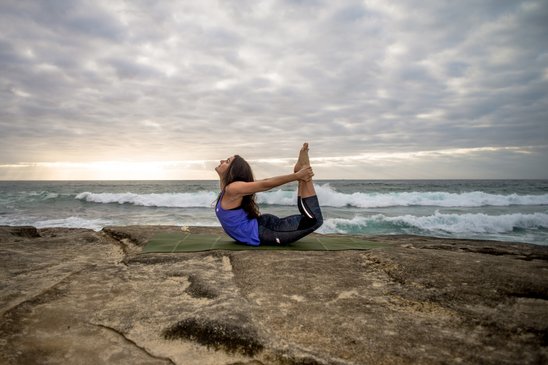
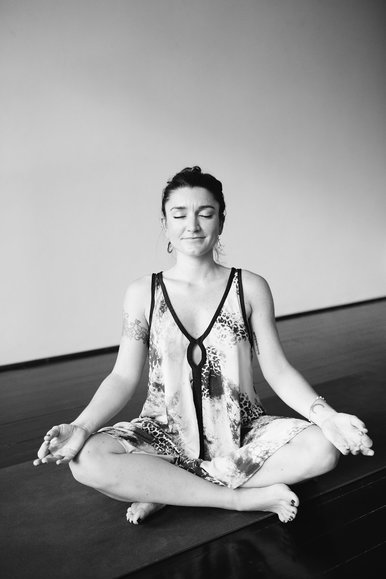
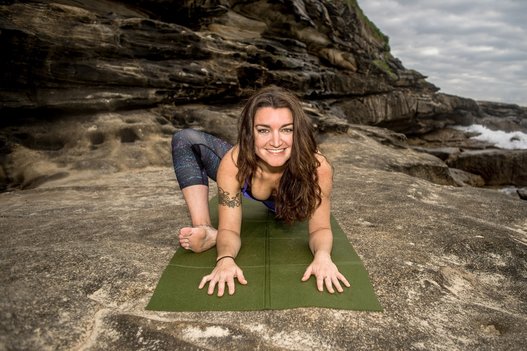
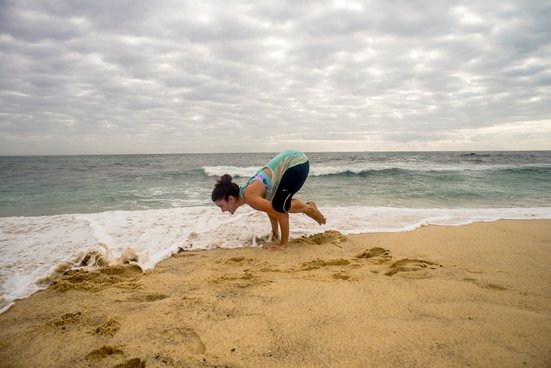
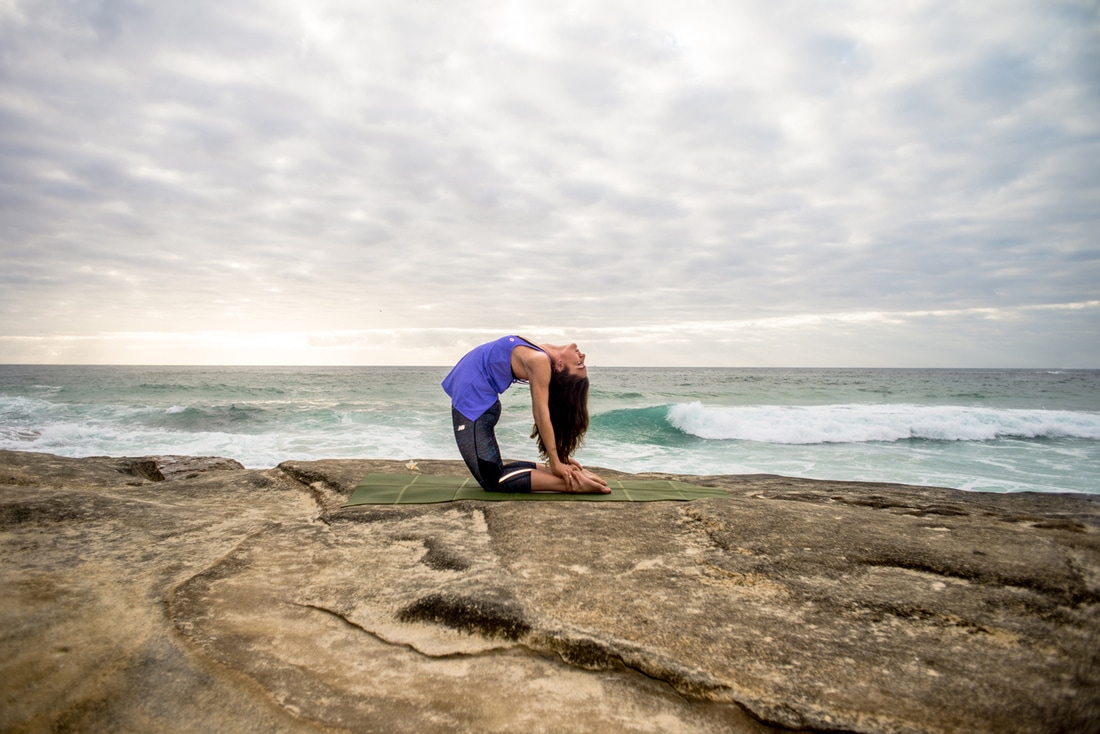
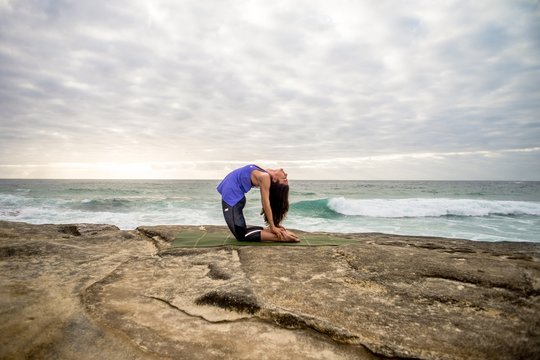
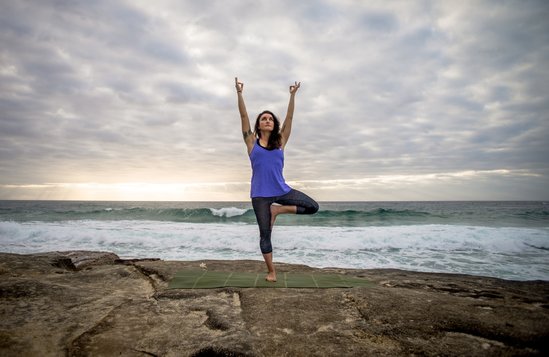
 RSS Feed
RSS Feed
